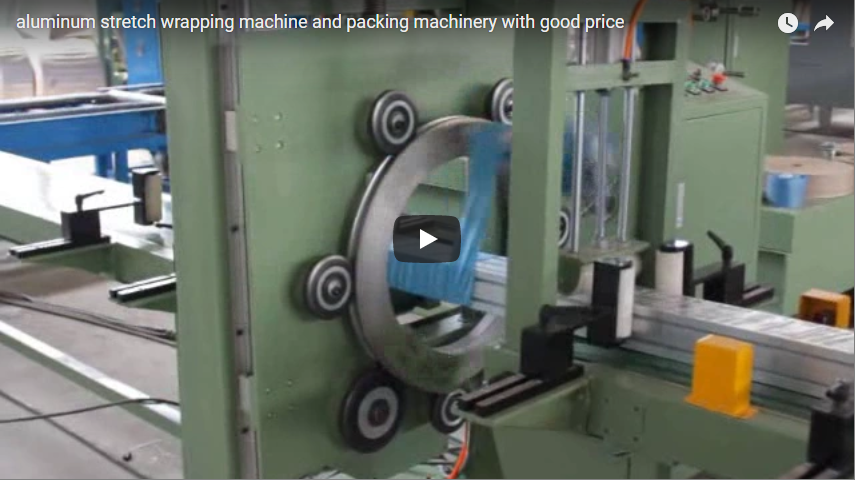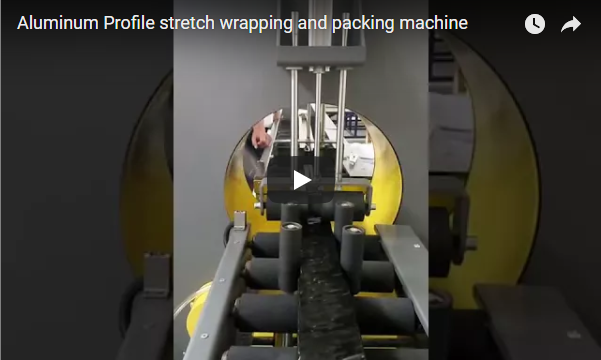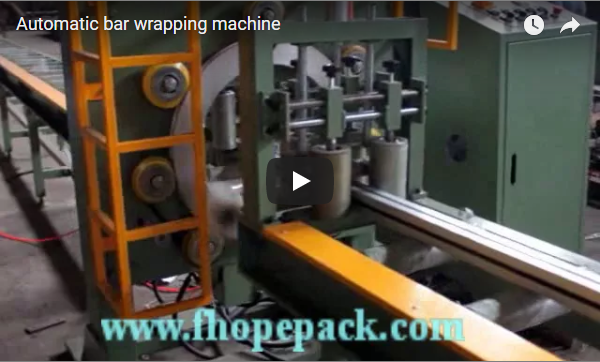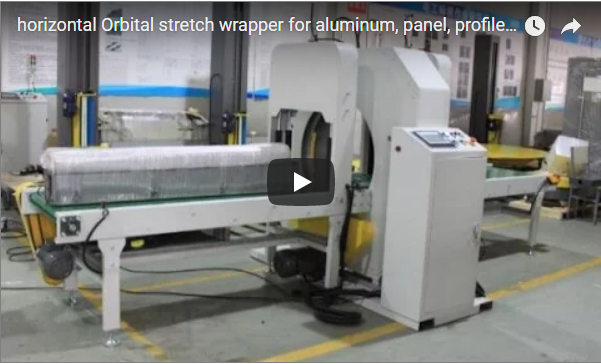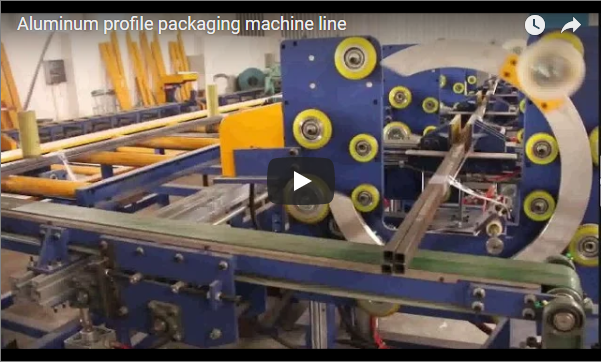Optimizing Packaging: A Technical Overview of Automatic Shrink Wrapping Machines for Profiles and Timber
The secure and efficient packaging of long, often irregularly shaped items like timber, aluminum profiles, plastic extrusions, and other similar materials presents unique challenges. Automatic shrink packing machines designed specifically for these applications offer a robust solution, providing protection, unitization, and a professional finish. This overview delves into the operation, specifications, and practical considerations of utilizing these machines effectively.
1. Operational Workflow: Step-by-Step Process
Understanding the sequence of operation is key to appreciating the machine's functionality:
- Infeed: Products (profiles, timber pieces, or bundled sets) are manually or automatically placed onto the infeed conveyor. Sensors often detect the product's presence and length to initiate the cycle.
- Film Dispensing: Rolls of flat shrink film (typically polyethylene - PE) are positioned above and below the conveyor path. As the product advances, the film automatically envelops it.
- Sealing:
- Side Sealing: Continuous heat sealers along the sides create a seamless side closure as the product moves.
- End Sealing (Cross Seal): Once the product passes a designated point, a sealing bar descends to cut the film and seal the front of the current pack and the back of the previous one, creating individual packages.
- Conveying to Tunnel: The loosely wrapped product is transferred onto the heat tunnel conveyor. Spacing between packages is maintained automatically.
- Heat Tunnel Shrinking: The package travels through a heated chamber (the shrink tunnel). Controlled hot air circulates around the film, causing it to shrink uniformly and tightly conform to the shape of the product. Temperature and airflow are critical parameters adjusted based on film type, thickness, and product characteristics.
- Cooling & Outfeed: After exiting the tunnel, the package may pass through a cooling zone to help the film set quickly, maintaining a tight wrap. It then moves onto the outfeed conveyor for removal or further processing (e.g., labeling, stacking).
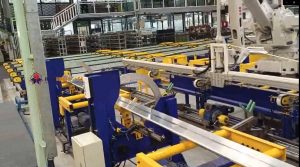
automatic aluminum profile bundling packaging line 2. Core Components and Functionality
Several key components work in concert:
- Infeed/Outfeed Conveyors: Transport the product through the machine. Belt or roller types are common, chosen based on product weight and surface.
- Film Roll Holders: Securely mount the shrink film rolls (upper and lower) and often include perforation systems for controlled air escape during shrinking.
- Sealing System: Comprises the side seal units and the cross-seal bar. Precision temperature and pressure control are vital for strong, consistent seals without burning the film. Different sealing technologies (e.g., hot knife, constant heat) exist.
- Heat Tunnel: An insulated chamber with heating elements and fans to distribute hot air evenly. Precise temperature control and adjustable airflow dampers are essential features.
- Control Panel (HMI): Typically a touchscreen interface allowing operators to set parameters like sealing time, tunnel temperature, conveyor speed, and package length. Stores recipes for different products.
3. Key Technical Specifications (Example Range)
Specifications vary widely based on machine model and application requirements. Typical ranges include:
- Packing Speed: 5-20 packs per minute (highly dependent on product length and sealing requirements).
- Maximum Product Dimensions:
- Length: Often ranges from 1 meter up to 6 meters or more.
- Width: 100 mm to 600 mm+
- Height: 10 mm to 300 mm+
- Film Type Compatibility: Primarily Polyethylene (PE) due to its strength and puncture resistance, suitable for timber and profiles. Polyolefin (POF) might be used for lighter profiles requiring higher clarity.
- Film Thickness: Typically 30 to 100 microns (PE).
- Sealing System: Side seal + End seal (Cross seal).
- Power Requirements: 220V/380V, 3-Phase; power consumption depends heavily on tunnel size (e.g., 15 kW - 40 kW+).
- Compressed Air: Often required for pneumatic functions (e.g., 6-8 bar).
Note: These are general ranges; specific machine capabilities should always be confirmed with the manufacturer.
4. Advantages Specific to Profile and Timber Packaging
Utilizing an automatic shrink wrapper for these materials offers significant benefits:
- Product Protection: Creates a barrier against moisture, dust, dirt, and surface scratches during handling, storage, and transport. UV-inhibitor films can offer protection against sunlight.
- Unitization: Bundles multiple pieces together securely, simplifying inventory management and handling. Prevents individual pieces from shifting or separating.
- Load Stability: A tight shrink wrap enhances the stability of bundled products, particularly important for long items during transit.
- Improved Presentation: Provides a clean, professional look compared to strapping or loose wrapping alone.
- Tamper Evidence: A sealed wrap indicates if the package has been opened or compromised.
- Adaptability: Can handle varying lengths and profiles with automatic length detection and adjustable settings.
5. Practical Insights: Film Selection and Operational Best Practices
5.1 Choosing the Right Shrink Film
- Material: Polyethylene (PE) is generally preferred for timber and heavier profiles due to its superior strength, puncture resistance, and lower cost compared to POF.
- Thickness: Select a thickness appropriate for the product's weight and potential sharp edges (e.g., rough timber might require thicker film, 60-80 microns, while smooth aluminum profiles might use 40-50 microns).
- Clarity & Additives: Consider if high clarity is needed for product visibility or if additives like UV inhibitors are required for outdoor storage.
5.2 Machine Operation and Maintenance
- Parameter Settings: Fine-tuning tunnel temperature, conveyor speed, and airflow is crucial. Insufficient heat results in a loose wrap; excessive heat can burn the film or damage the product. Start with manufacturer recommendations and adjust based on results.
- Changeovers: Understand the process for adjusting guides, sealing positions, and potentially film rolls when switching between different product dimensions. Storing settings as 'recipes' in the HMI saves significant time.
- Routine Checks: Regularly inspect and clean sealing blades/wires, check conveyor belts/rollers for wear, ensure heating elements are functioning correctly, and verify safety sensors are operational.
5.3 Safety Considerations
- Ensure all machine guarding is in place and interlocks are functional.
- Provide operators with thorough training on standard operating procedures and emergency stops.
- Follow appropriate Lockout/Tagout (LOTO) procedures during maintenance.
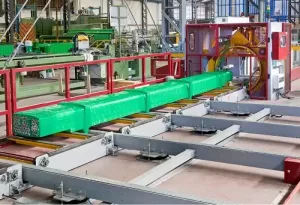
aluminum profile packaging lines 300x205 6. Integration and Selection Factors
When selecting a machine, consider:
- Required Throughput: Match machine speed to production line output.
- Product Size Range: Ensure the machine can handle the minimum and maximum dimensions of all products.
- Level of Automation: Determine the need for automatic feeding, integration with upstream/downstream equipment.
- Budget: Balance initial investment with long-term operational costs and potential labor savings.
- Vendor Support: Availability of technical support, spare parts, and service is crucial.
7. Conclusion: Enhancing Packaging Efficiency for Long Products
Automatic shrink packing machines purpose-built for profiles and timber provide an effective method for protecting, unitizing, and preparing these often challenging products for storage and distribution. By understanding their operational principles, key specifications, and best practices for film selection and maintenance, businesses can leverage this technology to improve packaging quality, increase operational efficiency, and ensure products reach their destination in optimal condition.
https://www.fhopepack.com/shrinking-machine/
info@fhopepack.com

